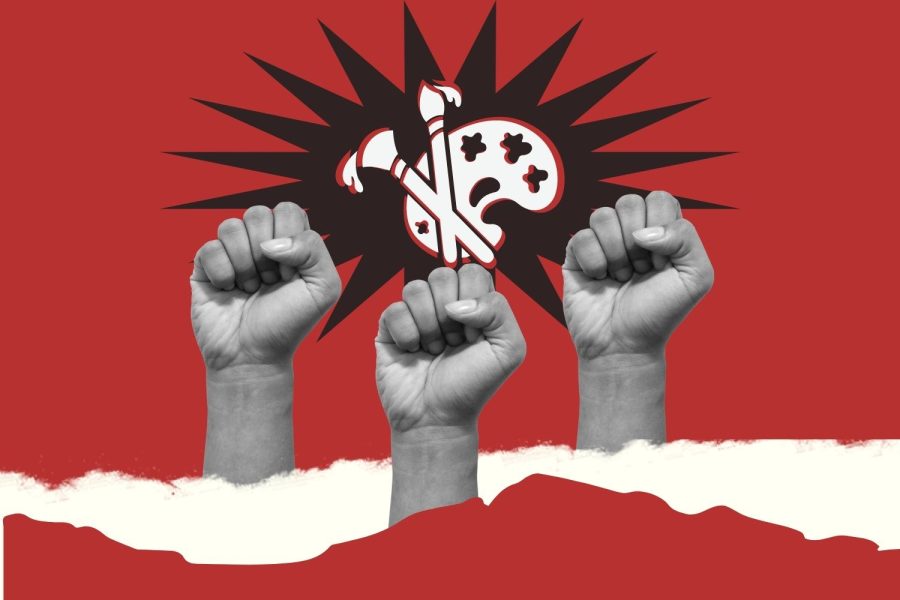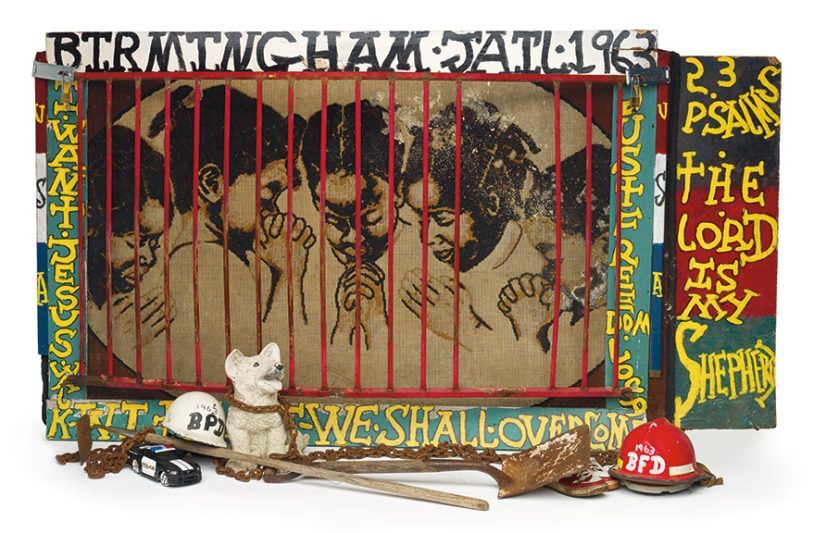Throughout history, art movements have acted as reactions to their time’s political and social climates and continue to reflect opinions about social injustice and politics.
“Art is a way to get a message across without yelling. It allows someone to absorb information in their own time, to find a way to process it without feeling judged or accused. Art often leaves people open to being moved,” said professional illustrator Megan Herbert.
In the past, art has represented key changes in history. During times of renewal or oppression, society illustrated its political turmoil through art; it was a way for creators to express and share their opinions with viewers.
Following the end of the Middle Ages, the Renaissance movement reflected the refreshed ideals of European society. Artists reconnected with Ancient Greek and Roman values, straying from their past focus on one-dimensional religious art. With its emphasis on realistic proportions and purposeful composition for depth, the Renaissance represented the idealization of the “potential of man.”
After the Renaissance, other art movements took shape in response to drastic events.
“While the Renaissance was a reaction to death and devastation, the French Revolution of 1848 in France unleashed that Romantic movement for the next 50 years. Later, the next French Revolution set up the realist movement,” said Jayson Waller, a Carlmont history teacher.
18th century Romanticism exemplified the European longing to return to a pre-industrial age. Soon after, realism came to criticize Romanticism’s glamorization of everyday life and strove to portray the realities of the working class.
During these revolutions, political changes in France were reflected in the variety of artistic movements. Yet, artists changed to reflect the realities of society in new historically influential times.
“The United States’ civil rights movement in the 1960s began numerous different styles of art, such as murals on college campuses, celebrating the lives and achievements of women, African Americans, Chicanos, and homosexuals,” Waller said.
The shifting times of the 1960s, exemplified in the civil rights movement, Vietnam War, and Cuban Missile crisis, led to the emergence of pop, performance, and conceptual art.
During the civil rights movement, art exhibitions played a fundamental role in raising money for racial equality organizations. Artists during this period took on the role of fighting for equality following the censorship of the 1950s.
Art styles have been translated from these past political movements into current-day injustices, portrayed through modern media and other mediums.
“We live in a time of a bombardment of the senses. Communicating complicated issues in ways that can be read and understood quickly and that can cut through the noise is imperative,” Herbert said.
More recently, the murder of George Floyd in 2020 set off protests all across the United States in demand of justice and against police brutality.
“The picture of a white policeman whose knee is on top of an African American on the pavement is a strong visual. And visuals can play the same role as art in people’s minds,” Waller said.
Although this scene was repainted countless times by different artists, the visual of racism was constant. This visual was utilized in protests which led to renewed awareness.
Modern art opens viewers’ eyes to issues in ways they can interpret themselves. Art can pay tribute to any subject and initiate calls to action by portraying scenes understandable by any viewer.
“The mural Kiku Dreaming, which I painted, focuses on the historic chrysanthemum industry with its pioneer Japanese American growers in Redwood City, many of whom were later forced into internment camps,” said muralist Claudio Talavera-Ballón.
Bringing attention to the internment of Japanese farmers through his mural, Ballon’s artistic works exemplify the messages art can portray and how it can educate viewers.
While art itself can bring attention to injustices, it also creates an opportunity for artists to educate themselves and bring that knowledge into their work.
“While researching for my mural, I discovered lost history concerning a group of Japanese Peruvians interned in the U.S. during World War II, a story not well-known even in Peru,” Talavera-Ballon said.
Each artist’s research put into their pieces is relayed to their viewers, educating society by shedding light on minorities and injustices. The portrayal of modern-day and historical issues is well represented within art and plays a significant role in activism.
“Art lets you connect your thoughts, inspire conversation, and allows you to make your own decision. That’s what makes it impactful,” Waller said.














